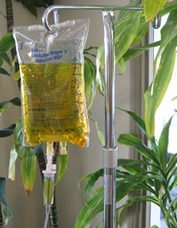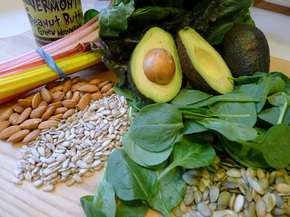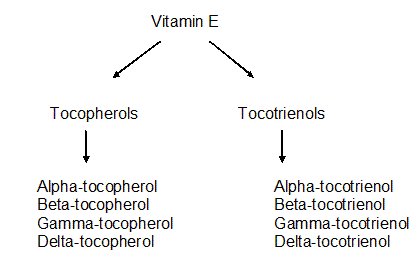 For many years artificial sweeteners (AS) like aspartame and sucralose have been suspected of having a wide range of negative effects on our health. Unfortunately it has been difficult to definitely prove and raise public awareness since the stance of most scientists and government experts is that there is no harmful effect at the small doses found in a piece of gum or in a diet soda. However in you take a look at the research a little more closely, there actually is no shortage of evidence pointing to these negative effects. AS do not contain any calories but they have a powerful "excitotoxin" effect in the brain. This means that even though they contains no calories, they overstimulate nerve cells in the brain. This causes a cascade of negative effects including activating inflammation and immune cells to cause chronic damage. AS have also been linked to DNA damage which can lead to the development of mutations and eventually cancer.1 The research is starting to pile up linking AS consumption to lymphomas, leukemias, cancers of the bladder and brain, chronic fatigue syndrome, Parkinson's disease, Alzheimer's disease, multiple sclerosis, autism, and systemic lupus. After understanding the "excitotoxin" effect of AS in the body, especially in the brain, these diseases should not be a surprise. The real paradox is many people use AS to lose weight but studies actually show the opposite is true. There is no doubt that refined sugar is unhealthy but AS is not better. Since AS stimulate the brain, it promotes more eating later and less portion control. Remember, AS are ULTRA sweet, sometimes 100's of times sweeter than sugar so this can really stimulate the part of our brain that will cause us to crave more sweets later.2 A link that was always tough to nail down is to cancer. A recent study did show that leukemia risk increased in men who consumed more than 1 diet soda a day. The risk was greater than those that consumed sugar-containing soda. So again, AS comes out worse than even sugar.3 There are numerous websites and youtube videos dedicated to showcasing the negative effects of AS. Many are hardline, unscientific and dramatic but there are a handful that provide excellent information on the negative effects of AS like aspartame. I encourage you to explore them for yourself to learn about some of the foods that contain AS. Here is a link to a interesting interview with an integrative neurologist, Dr Russell Blaylock, who has dedicated much of his career to educate people on excitotoxins. I have also attached a really nice review of the topic from a more scientific perspective if anyone is interested. The bottom line for me is AVOID them. Even if they were safe (which they are not), they do not help you lose weight and may even cause you to over eat and gain more. They over-excite the brain and most likely cause cancer and neurological dysfunction. AVOID them and choose naturally occurring sugars from fruit, agave and raw honey. References 1) Bandyopadhyay A, Ghoshal S, Mukherjee A Genotoxicity testing of low-calorie sweeteners: aspartame, acesulfame-K, and saccharin. Drug Chem Toxicol. 2008;31(4):447-57. 2) Fowler SP, Williams K, Resendez RG, Hunt KJ, Hazuda HP, Stern MP. Fueling the obesity epidemic? Artificially sweetened beverage use and long-term weight gain. Obesity (Silver Spring). 2008 Aug;16(8):1894-900. 3)Schernhammer ES, Bertrand KA, Birmann BM, Sampson L, Willett WC, Feskanich D. Consumption of artificial sweetener- and sugar-containing soda and risk of lymphoma and leukemia in men and women. Am J Clin Nutr. 2012 Dec;96(6):1419-28
0 Comments
 I have already written extensively about the potential of vitamin C as one of the most promising natural anti-cancer therapies. A new study published in may 2013 has found that anti-cancer concentrations of vitamin C can be achieved using large Intravenous (IV) doses.1 " Stephenson CM, Levin RD, Spector T, Lis CG. Phase I clinical trial to evaluate the safety, tolerability, and pharmacokinetics of high-dose intravenous ascorbic acid in patients with advanced cancer. Cancer Chemother Pharmacol. 2013 May 14." While it is still just a phase 1 clinical trial, it is another piece of information that can be added to the growing body of research supporting the safety and potential effectiveness of vitamin C. As a naturopathic doctor with a clinical interest in integrative cancer care, IV vitamin C is one of my most commonly used therapies. I find it improves quality of life, speeds recovery after chemo or radiation, prevents side effects if used before or duration radiation and can even prevent re-occurance of cancer. Despite common use and positive clinical effects, there still is need for more large-scale research in humans. This study further adds to the human evidence using vitamin C in cancer patients. With this recent study as a backdrop I am going to highlight the basic points of vitamin C use in oncology. Here are the facts we do know so far: 1) Vitamin C does possess direct anti-cancer effects in test-tube and mice models at serum concentrations above 1–5 mM2 2) Oral doses raise plasma (blood) levels to a maximum of 0.22 mM, well short of a direct anti-cancer effect.1 3) Doses of greater than 60g of IV vitamin C are required to make plasma levels cytotoxic to cancer cells.3 4) There have been 3 phase 1 clinical trials to date (now 4 with the most recent study published this month). These trials found IV vitamin C very safe and well tolerated but an anti-cancer effect was noted in only a few subjects. 1 5) IV vitamin C is safe with the majority of chemotherapeutic agents. There is even some evidence suggesting that it improves effectiveness and reduces side effects.1,4 There are still a number of key questions that remain unanswered in vitamin C research. What is the optimal dosage of IV vitamin C? How often should infusions be done? Is there a consistent anti-cancer effect achievable with high doses? Each clinician may have a different protocol depending on their interpretation of the evidence or clinical experience. Based on my clinical experience, I have found that there is no doubt that IV vitamin C, multi-mineral and multi-vitamin infusions improve the patient’s quality of life and prevent/resolve side effects associated with chemo or radiation. It is more difficult to discern the effect of high dose vitamin C since there are a number of other natural therapies often being used at the same time. This recent study attempts to shed more light on the effect of high dose vitamin C therapy in cancer patients. What Does It Tell Us? This new study pulled on all the experience and expertise of researchers and clinicians that have been working with high dose vitamin C for the last decade. 17 patients with various cancers were enrolled in the 4 week study and a number of different dosage groups were determined. Doses from 30-130g were administered. A specific IV protocol was used (vitamin C, calcium, magnesium and potassium) in order to maintain electrolyte balance during the infusions. The study determined that the optimal dose to maximize vitamin C concentration was 70g. Serum concentrations of 10-20nM were maintained for at least 5 hours at this dose. Higher doses did not have greater concentrations and did not last longer. The most common side effect was nausea and headaches but no serious side effects were noted at any dose. After 4 weeks, none of the patients have a measurable reduction is tumor size. The 4 week time frame is most likely not long enough to see a substantial tumor shrinking effect. Some patients did find an improvement in their quality of life. So what can conclude from this study? 1) The safety of high dose IV vitamin C therapy at dose greater than 100g. 2) Quality of life may improve after 4 weeks but the time frame may be to short to see a substantial tumor shrinking effect. 3) Doses of greater that 70g are needed to achieve a consistent maximal concentration greater than 30–40 mM in the plasma. We still are not certain what exact concentration has consistent anti-tumor effects in the mice. Based on this study and the other recent research the dose is most likely between 50 and 90g.1,5 4) A peak concentration of approximately 49 mM was achieved with a dose of 70g with a half life of 2 hours. Concentrations of 10-20nM were maintained for at least 5 hours at this dose. 5) Doses of greater that 80g don’t provide any additional benefit. It is nice to see another study using vitamin C in cancer care. I have to commend the authors on a good background of vitamin C evidence and solid study design. The clear short comings are that it did lack blinding and randomization. While definitive evidence is still lacking, we now have a greater understanding of dosage and frequency of treatment. Multiple treatments per week at doses of 70g would most likely yield positive effects according to this study. It is important to remember that vitamin C therapy is not all about a direct anti-cancer effect. Many clinicians report beneficial effects at much lower doses. We still don’t fully understand the many ways that vitamin C works in the human body. I do not doubt that when it comes to cancer, it most likely is impacting multiple pathways that promote the healthy function of our immune system which kills cancer cells and strengthens the supporting structure of healthy tissue around tumors thus impairing growth and spread. IV vitamin C remains one our best natural therapies against cancer and we eagerly await more research to shed more light on its effects. In Health Dr Paul References 1) Stephenson CM, Levin RD, Spector T, Lis CG. Phase I clinical trial to evaluate the safety, tolerability, and pharmacokinetics of high-dose intravenous ascorbic acid in patients with advanced cancer. Cancer Chemother Pharmacol. 2013 May 14. 2) Leung PY, Miyashita K, Young M, Tsao CS (1993) Cytotoxic effect of ascorbate and its derivatives on cultured malignant and nonmalignant cell lines. Anticancer Res 13:475–480 3) Riordan HD, Riordan NH, Jackson JA, Casciari JJ, Hunninghake R, Gonzalez MJ, Mora EM, Miranda-Massari JR, Rosario N, Rivera A (2004) Intravenous vitamin C as a chemotherapy agent: a report on clinical cases. P R Health Sci J 23:115–118 4) Verrax J, Calderon PB. The controversial place of vitamin C in cancer treatment. Biochem Pharmacol. 2008 Dec 15;76(12):1644-52. 5) Chen Q, Espey MG, Krishna MC, Mitchell JB, Corpe CP, Bu- ettner GR, Shacter E, Levine M (2005) Pharmacologic ascorbic acid concentrations selectively kill cancer cells: action as a pro- drug to deliver hydrogen peroxide to tissues. Proc Natl Acad Sci USA 102:13604–13609  Foods high in Vitamin E Foods high in Vitamin E One of the most frequently studied natural compounds is vitamin E. It is a family of molecules that have a potent antioxidant effect in fat rich tissues such as skin, nerves and vital organs. A number of studies have found that vitamin E supplementation reduces lipid peroxidation, improves cognitive performance after brain injury, improves hot flashes in menopause and lowers cholesterol.1 Deficiency in vitamin E have been linked to Alzheimer’s disease but supplementation has not shown clear and consistent benefit.2 Populations studies suggest that vitamin E may have a preventative role in cancer however, several recent large-scale human trials with α-tocopherol, the most commonly used form of vitamin E, failed to show a cancer preventive effect.1 The recently published Selenium and Vitamin E Cancer Prevention Trial (SELECT) even showed higher prostate cancer incidence in subjects who supplemented with α-tocopherol.3 This has scared my people and healthcare practitioners into stopping to take vitamin E as supplement. Vitamin E possesses therapeutic potential based on its proposed action in the body but there is growing negative and conflicting evidence. What can be concluded about its health benefits? It is safe to be used as supplement? Some of the conflicting results may be due to a number of flaws that exist in the use of vitamin E as an intervention in research trials. Vitamin E is a family of 8 molecules (four tocopherols and four tocotrienols) that function synergistically in human physiology.1 Most studies have only used low doses of α-tocopherol, which has been thought to be the active form in human physiology since it’s the most common form found in tissues. Most studies state they use vitamin E but in reality they are only supplementing with one form and not the full group of molecules that makes up vitamin E. While tocotrienols represent 50% of the vitamin E molecules over 95% of all studies to date have only used α-tocopherol.4 There also is evidence that the natural form has a more detrimental effect than synthetic α-tocopherol.1 While this flies the in face of the notion that natural forms are usually more bioavailable the evidence suggests that both forms of α-tocopherol have a negative effect on mortality. The reason that α-tocopherol may have detrimental effect on mortality is that it strongly binds to a vitamin E transfer protein in the liver which prevents the absorption and distribution of other forms of tocopherols and tocotrienols.1,5 The other forms of tocopherols and tocotrienols have been shown to have a better chemo-protective and anti-inflammatory effect than α-tocopherol. While α-tocopherol does have an anti-thrombotic effect, γ-tocopherol is the main anti-inflammatory component of the vitamin E family and has been found to be more effective than the alpha form in scavenging free radicals that cause inflammation. γ-tocopherol is more protective against certain types of cancer and myocardial infarction than α-tocopherol.6 Emerging evidence suggests that the tocotrienol family has even more benefits than the tocopherols in stroke recovery, cancer prevention and vascular health.4 Preclinical and animal studies have shown tocotrienols are able to lower cholesterol and protect cellular membranes through a powerful antioxidant effect. Like γ-tocopherol, tocotrienols possess powerful anti-inflammatory effects, which represent promising application in brain injury and cancer prevention.4 The question arises why are tocotrienols superior to α-tocopherol? The answer is not completely clear but it appears they are better distributed throughout fatty tissue and unlike α-tocopherol, they do not inhibit the transport and bioavailability of other forms. In addition, vitamin E works with other antioxidants such as vitamin C and Coenzyme Q10 as part of an antioxidant network. Supplementation with a single antioxidant can lead to itself becoming oxidized if adequate levels of supporting antioxidants are not present.7 The fact that studies have only used α-tocopherol and not the full spectrum of vitamin E molecules and supportive antioxidants may be the reason that have led to poor outcomes in research trials. A number of negative studies have put the whole vitamin E family in a negative light while the true culprit is only α-tocopherol. The synergistic nature of the vitamin E family highlights the need to supplement antioxidants together in order to support their proper biological function in the body. Recent evidence is starting to support the benefit of all the forms of vitamin E in cognitive decline and obesity related diseases however more is needed to vindicate this misunderstood vitamin.8,9 The full spectrum of tocopherols and tocotrienol offer unique and pronounced health benefits if we can get adopt the reality that they must be supplemented together. Whenever looking for a vitamin E supplement make sure that it contains all 8 forms for vitamin E to harness all the beneficially effects. Vitamin E is also found in plants rich in healthy fats. Below is a list of foods rich is vitamin E. References
1. Gee PT . Unleashing the untold and misunderstood observations on vitamin E. Genes Nutr. 2011 Feb;6(1):5-16. 2. Joshi YB, Praticò D. Vitamin E in aging, dementia, and Alzheimer's disease. Biofactors. 2012 Mar-Apr;38(2):90-7. 3. Yang CS, Suh N, Kong AN. Does vitamin E prevent or promote cancer? Cancer Prev Res (Phila). 2012 May;5(5):701-5. 4. Sen CK, Khanna S, Roy S (2007) Tocotrienols in health and disease: the other half of the natural vitamin E family. Mol Aspects of Med 28:693–728. 5. Huang H-Y, Appel LJ (2003) Supplementation of diets with a-tocopherol reduces serum concentrations of c- and d-tocopherol in humans. J Nutr 133:3137–3140 6. Wagner KH, Kamal-Eldin A, Elmadfa I. Gamma-tocopherol--an underestimated vitamin? Ann Nutr Metab. 2004; 48(3):169-88. 7. Usoro OB, Mousa SA. Vitamin E forms in Alzheimer's disease: A review of controversial and clinical experiences. Crit Rev Food Sci Nutr. 2010;50:414–9 8. Mangialasche et al. Tocopherols and tocotrienols plasma levels are associated with cognitive impairment. Neurobiol Aging. 2012 Oct;33(10):2282-90 9. Yachi R, Muto C, Ohtaka N, Aoki Y, Koike T, Igarashi O, Kiyose C. Effects of tocotrienol on tumor necrosis factor-α/d-galactosamine-induced steatohepatitis in rats. J Clin Biochem Nutr. 2013 Mar;52(2):146-53. |
Welcome To My Blog
My goal is to post thought-provoking and informative articles so you can learn and apply the latest news from the world of natural health. Feel free to post comments and start a conversation. Stay tuned to my twitter and facebook feeds for the latest posts.
Archives
December 2015
|
||||||



 RSS Feed
RSS Feed

